Why scientists believe that the Ninth Planet does not exist
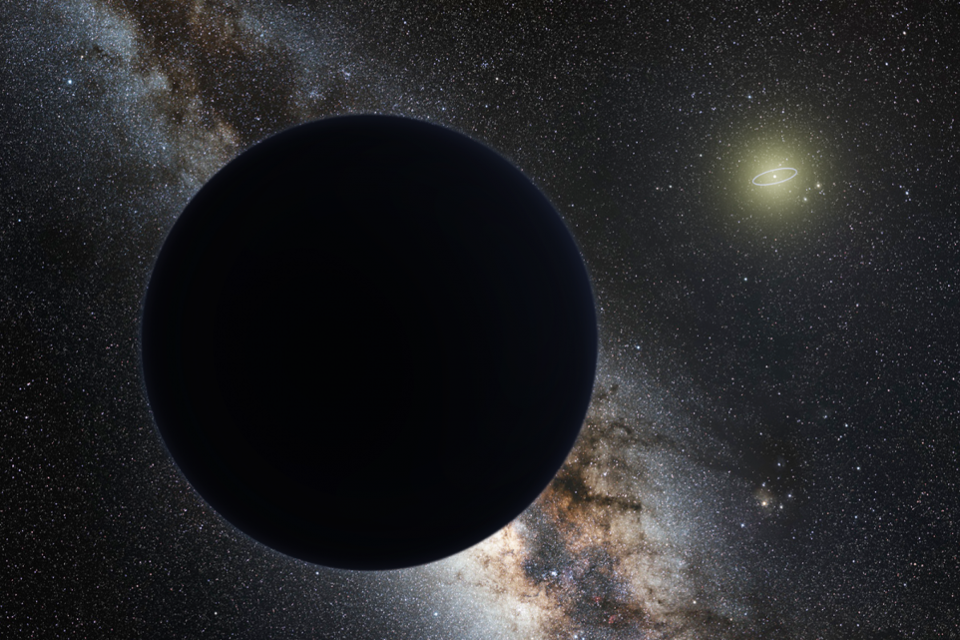
The artist’s view of the Ninth Planet as an ice giant overshadowing the center of the Milky Way, with a sun-like star depicted in the background. Neptune's orbit is shown as a small ellipse around the sun.
Almost three years have passed since the appearance of one of the most interesting assumptions concerning our own space courtyard: that far beyond the limits of the orbit of Neptune, another planet may exist in our solar system, even more massive than the Earth. Unlike the tiny worlds discovered earlier in the Kuiper belt , such as Pluto or Eris , it can be a world larger than the Earth, with a mass probably ten times larger than that of Earth, and responsible for imparting objects of strange orbits visible to us.
As suggested by Konstantin Batygin and Michael Brown, additional evidence should speak in favor of its existence, some of which began to emerge. However, most scientists do not agree with this evidence. They argue that this data is biased. And given this, then no Ninth Planet is no longer needed.
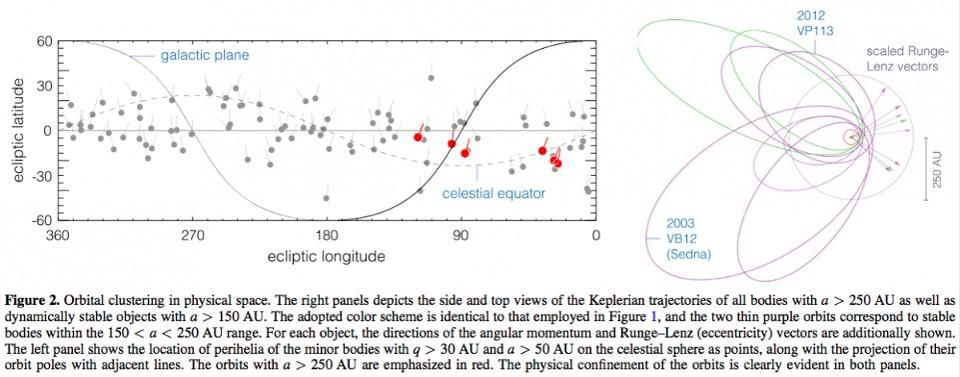
Alignment in ecliptic latitude and longitude of many trans-Neptunian objects (TNO) with the longest circulation period may turn out to be a coincidence, a result of biased observations, or a sign of a new physical phenomenon.
')
The Kuiper Belt is home to the largest cluster of distant objects we’ve found. When studying them, one would expect a random orientation of their orbits, the slope and the points of minimum approximation should be equally distributed in all directions.
However, the orbits of the most distant objects, according to the available observations, are shifted in one particular direction, and tilted in one direction. If only one or two objects behaved this way, this could have been written off for the case, but we have six such objects; the odds of coincidence are about 0.0001%. Astronomers Konstantin Batygin and Michael Brown proposed a new radical theory: the existence of the super-distant ninth planet, more massive than the Earth, but lighter than Uranus and Neptune, which throws these objects into their new orbits.
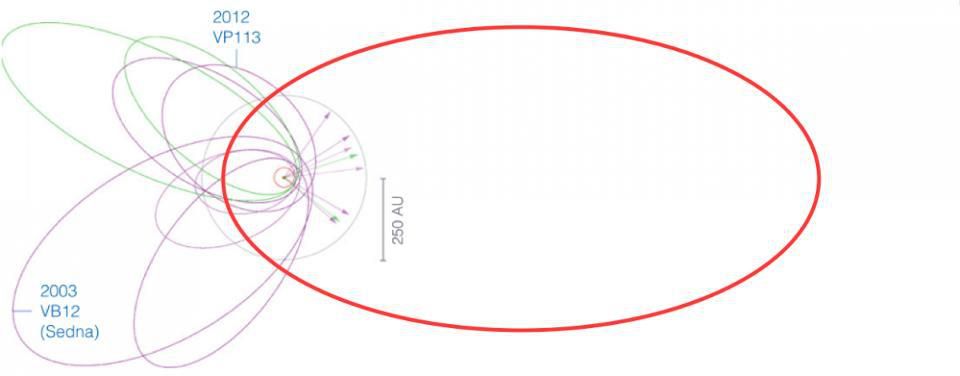
The orbits of the famous sednoids , together with the alleged Ninth Planet. In the distant future, the Ninth Planet, whose existence is very controversial, will not be able to warm up enough to become habitable, even if the Sun turns into a red giant.
This stunning idea, if confirmed, will have some interesting implications. In particular, the following will be performed:
- There should be an excess number of objects, the orbits of which are greatly stretched due to gravitational interactions.
- The orbits and orbital planes of these objects under the influence of the Ninth Planet will be tilted in a certain way.
- There should be a small but non-zero accumulation of objects whose orbits are strictly opposite to the orbits of this excess population.
- There must be the Ninth Planet itself awaiting discovery.
With the advent of additional research, Batygin and Brown pointed out some objects — one here, another there, a couple more in the next work — as evidence of the first three points. But the Ninth Planet is still slipping away from direct observation.
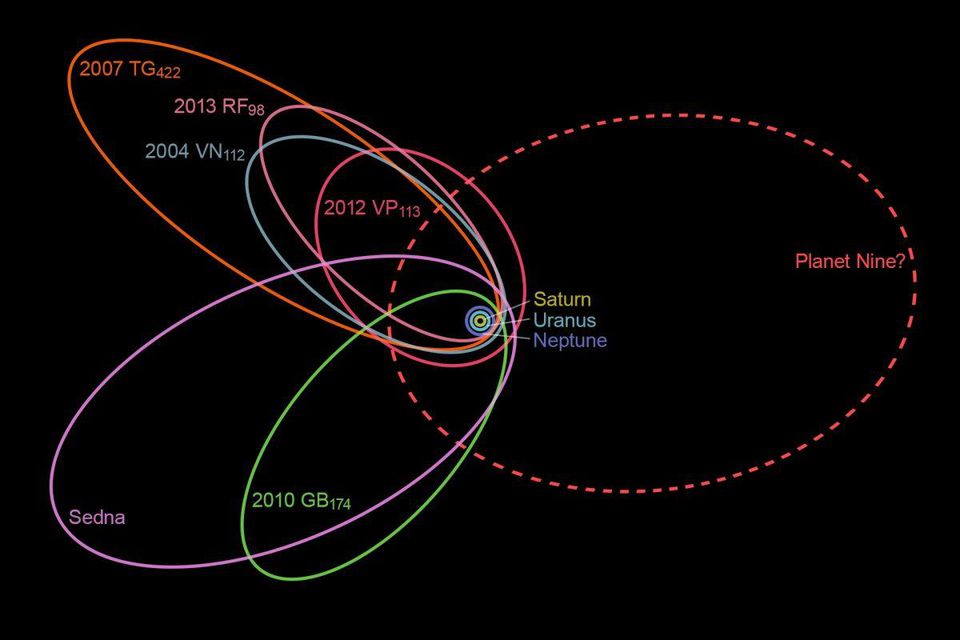
The unusually closely spaced orbits of six of the most distant Kuiper belt objects, discovered in 2016, may indicate the existence of a ninth planet, whose gravity affects their movement.
And this is not so amazing! Even if the Ninth Planet were real and big, it would be extremely dim, being at the predicted distance from the Sun. You might decide that if it is ten times farther from Uranus and is about the same size, it should be only 100 times less bright, since the brightness is inversely proportional to the square of the distance. But from our point of view, sunlight suffers from this problem twice: sunlight that has reached such a distant world will be 100 times dimmer than light that has reached a closer world, and then it also reflects, as a result of which it has to go through two times the bigger way before he reaches the earth. And instead of decreasing according to the 1 / r 2 law, the light that we actually see decreases as 1 / r 4 , which is why it’s incredibly difficult to see such a distant world.
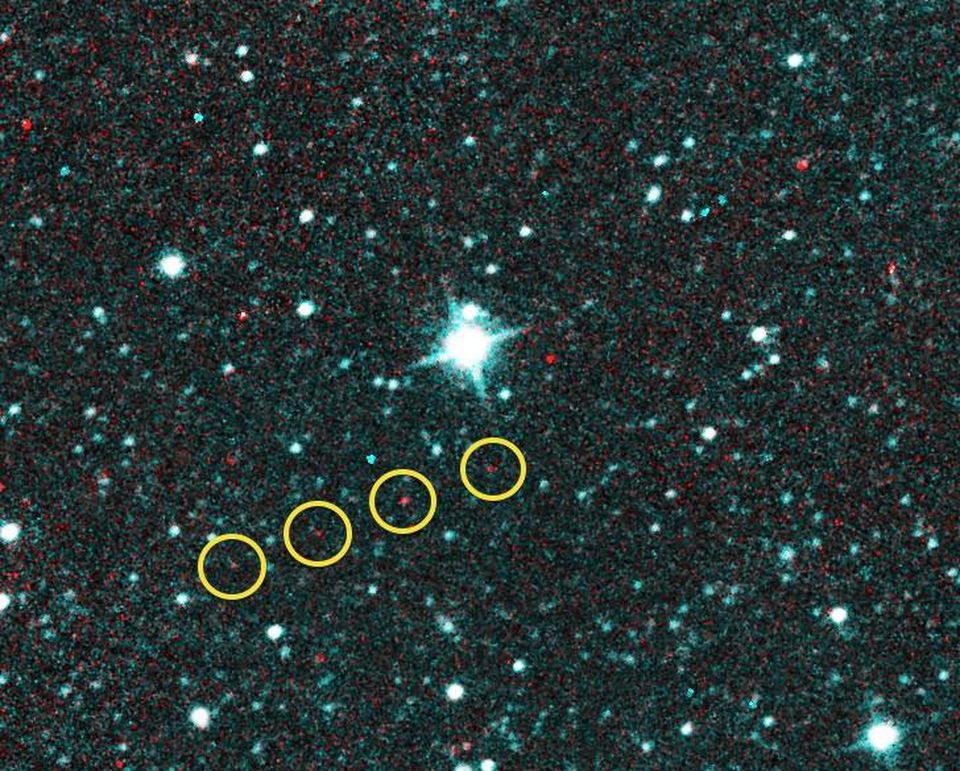
Very dim objects can be detected with special observation, but finding a small, dim and distant object in the solar system is even more difficult due to the problem of reflected sunlight. If the object is two times farther away from the other, the light must travel twice as far to it, which means that the object will reach only 1/4 of the light, and then it must go back, having traveled twice the greater distance, which gives 1 / 16 original brightness. The ratio 1 / r 4 for brightness in this case has disastrous consequences.
From a theoretical point of view, this idea is brilliant. It is always very interesting to observe how one can explain a large set of observations that have no meaning in themselves, with the help of a single new object. But, as in the cases with many brilliant ideas, the possibility remains that it turns out to be false. From the fact that the six ultra-long objects behave a little unusual, it does not follow that there are no six million super-long objects that behave perfectly normal - but we have not yet seen them.
In short, we need to make sure that the evidence we observe is characteristic of the objects existing there - and the idea stumbles at this point.
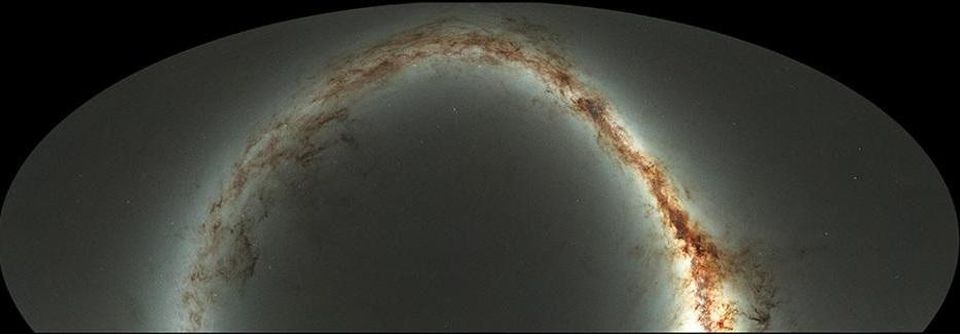
A compressed image of the entire sky, visible from the Hawaiian Observatory Pan-STARRS1 , is obtained from half a million individual frames, with an exposure time of 45 seconds. However, the observations from which data for the Ninth Planet were taken are not so evenly distributed over the sky.
So far, we have to rely on indirect evidence put forward by Batygin and Brown. In total, they said about ten objects that match their predictions. This is impressive, and represents an improvement over the original six.
However, they did not use data from surveys of the whole sky to search for these objects: similar surveys (such as Pan-STARRS, for example) do not look deep enough. Trans-Neptunian objects and their strange orbits, for which the Ninth Planet would be responsible, must be located in a certain place in the sky. If you want to find these objects, there are certain places in which to look for them.

Comparison of the 2015 RR245 orbit with gas giants and other known Kuiper belt objects. Note that due to the movement of the Earth around the Sun, the picture changes due to weather, seasons and visible parts of the sky. As a result, the picture of observations may be distorted.
And this is normal, but the theory of Batygin-Brown is based not only on the fact of the existence of these objects, but on the fact that they exist, and their accumulation is hardly accidental.
But what is the likelihood of such a cluster? It strongly depends on a couple of factors, for example, exactly where you make the observations, and with what sensitivity. If most of the time you look where you expect to find a cluster of objects, of course, you will find more of them; you just watch there longer and generally find the most there. This does not mean that something unusual is happening, such as an unusual cluster.
In fact, there is a high probability that nothing unusual is happening there; most likely you are a victim of prejudice observation.
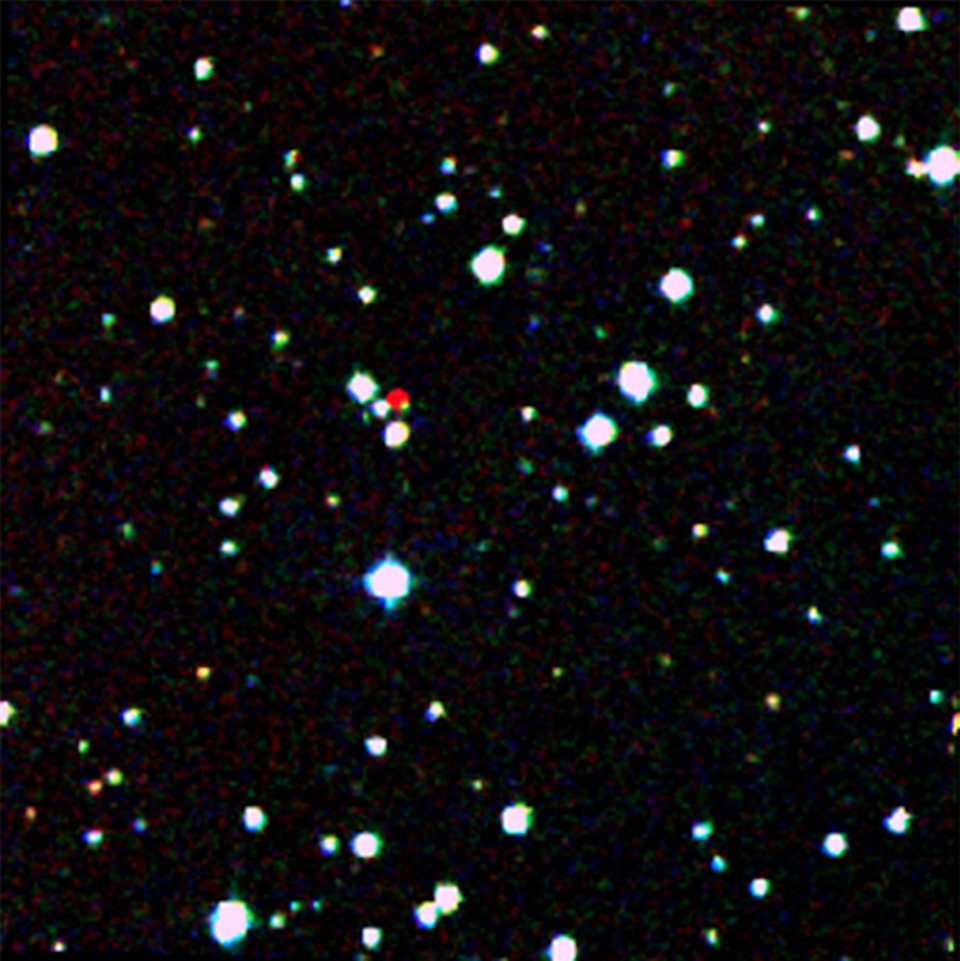
Existing technologies allow finding very dim, very cold or slow moving objects, but it all depends on finding them in places where these objects are long enough. In the photo - the WISE mission finds a rare, ultracold dwarf star, which is marked in red. This method of searching for the Ninth Planet may not be the best option.
The ten objects identified by Batygin and Brown are determined from the results of various observations of various depths, and, importantly, the potential bias of observation has never been evaluated. Imagine that you have a telescope located near the equator of the Earth, and every night you look at the night sky, trying to look as much as possible and as deep as possible. If you have a clear and dark sky with good visibility 365 days a year, you can equally explore the whole sky. However, this does not happen. Instead of this:
- Some periods of the year are more susceptible to bad weather.
- At some periods, atmospheric turbulence and poor conditions are more common.
- Some parts of the sky, such as the galactic plane, are polluted and do not detect TNO.
And so on. The bottom line is that if you give preference to two particular areas of the sky where, as you expect, objects should accumulate, you will find a cluster of objects there. Perhaps you find them simply because you are looking.

Three-dimensional orbits of Kuiper belt objects affected by the Ninth Planet. As Michael Brown said: “Deleted objects with orbits perpendicular to the solar system were predicted by the Ninth Planet hypothesis. And then found five minutes later. ” However, they could be found only because there is good data in this area.
Of course, the team of Batygin and Brown today have already opened 10 objects, demonstrating congestion. But are they evidence of the existence of the Ninth Planet?
There is a straightforward way to check the reality of the effect: to conduct a special observation, devoid of this bias, or, at least, to evaluate it numerically. Now there is a major observation of the worlds outside Neptune in the Solar System: Outer Solar System Origins Survey ( OSSOS ). Within its framework, more than 800 objects have already been discovered, and the search was carried out in four defined areas of the sky for four years. (So much time is spent searching for tangible movement and measuring the orbital parameters of worlds so remote from the Sun!) And out of hundreds of these objects, eight have properties of long periodicity, in favor of or against the Ninth Planet.
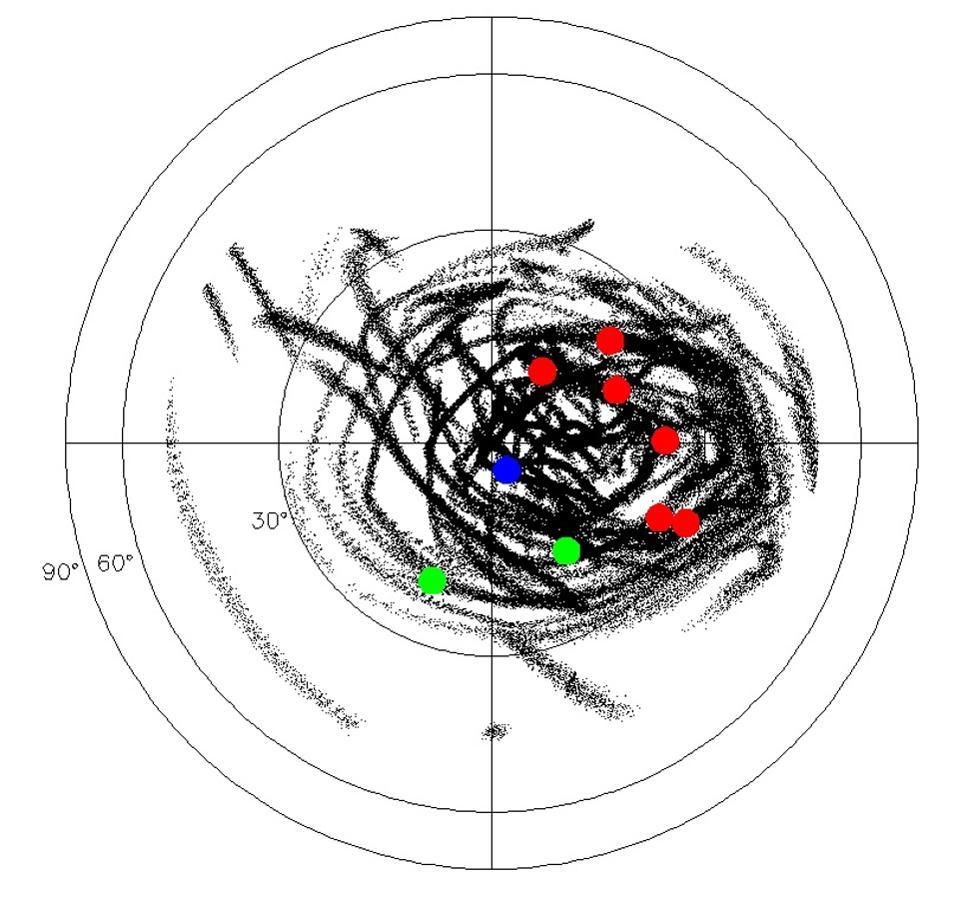
Of all the long-period trans-Neptune objects found in the OSSOS study, only one (marked in blue) has parameters that coincide with the Batygin / Brown theory.
The results are definite and disappointing. Before the study, simulations were conducted, with or in the absence of a massive ninth planet outside of Neptune, from which it follows which results should speak in favor of the existence of the planet, and which - against. Here is what was discovered for eight such objects:
- The eight open OSSOS orbit objects are located at different angles.
- The observed orbits statistically coincide with random ones.
- OSSOS did not find patterns of the previous sample.
- One of the objects moves at the right angles to two putative clusters.
- Orbits are not so close together.
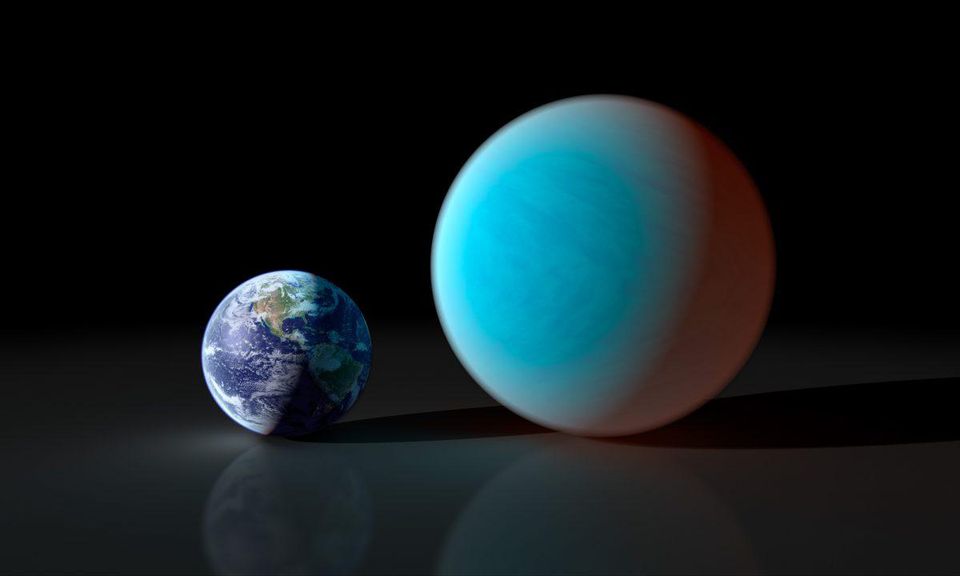
In theory, the Ninth Planet would look like an Exoplanet 55 Cancer e , whose radius is about two times larger than that of Earth, and its mass is about eight times as large. But a new study rejects the existence of such a world in the outer solar system.
Most importantly, their discoveries corresponded to the fact that there is no Ninth Planet, and that the arguments for its existence were weakened by their research. In particular, clusters of orientations of orbits in space (determined by many variables, ω and Ω), noted in earlier studies, for example, Batygin with Brown and Trujillo with Shepard , simply do not exist in this new, unbiased study .
In the OSSOS sample, we found no evidence for the ω cluster, which was the basis of the hypothesis of an additional planet.
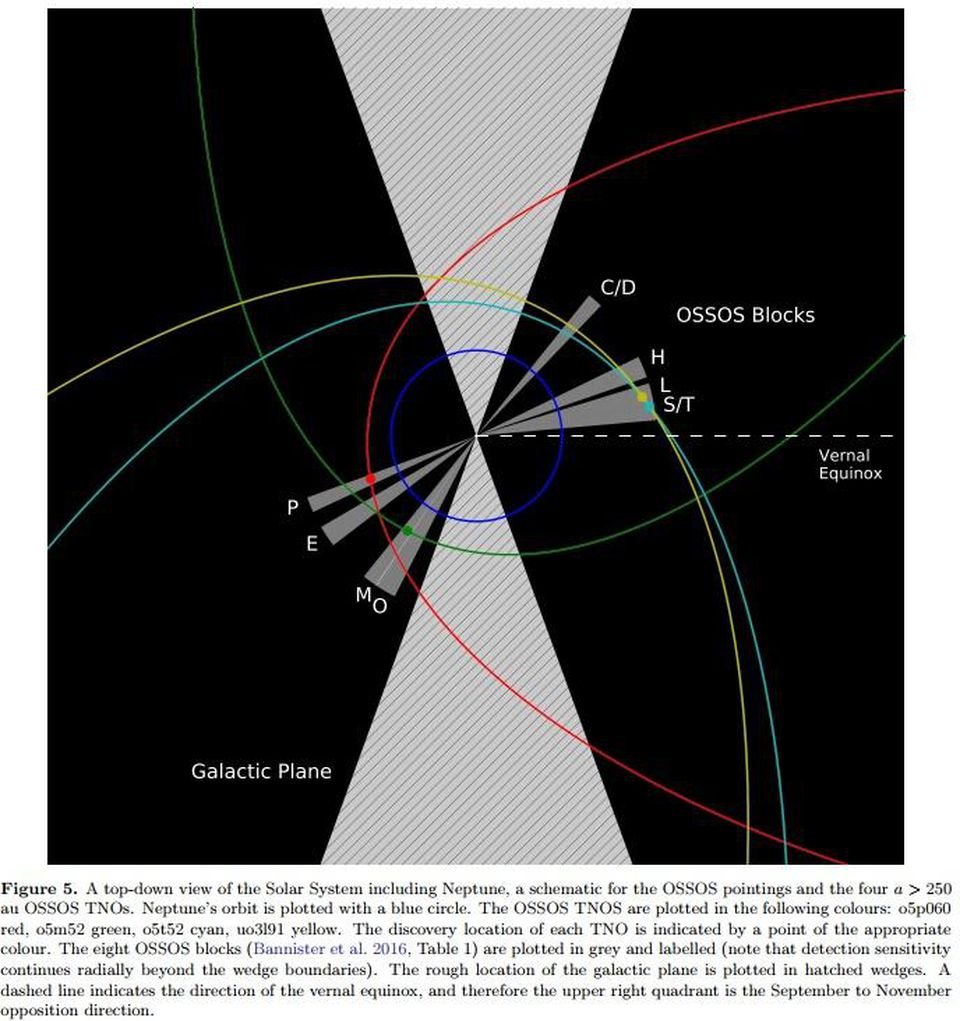
Four trans-Neptunian objects detected by OSSOS are shown for comparison along with the orbit of Neptune. These objects do not have such a correlation, which was the previous objects discovered by the team of the Ninth Planet.
The authors of this study from 2017 suggest that previous research was inclined in favor of the existence of such a world because of the bias of observation. However, a thorough determination of the bias found in the OSSOS study explains where these correlations come from and why they are not visible in the new data:
We assume that this cluster was the result of a combination of observation bias and statistics on a small sample, although we cannot verify this without publishing the characteristics of the observations that detected these TNTs.
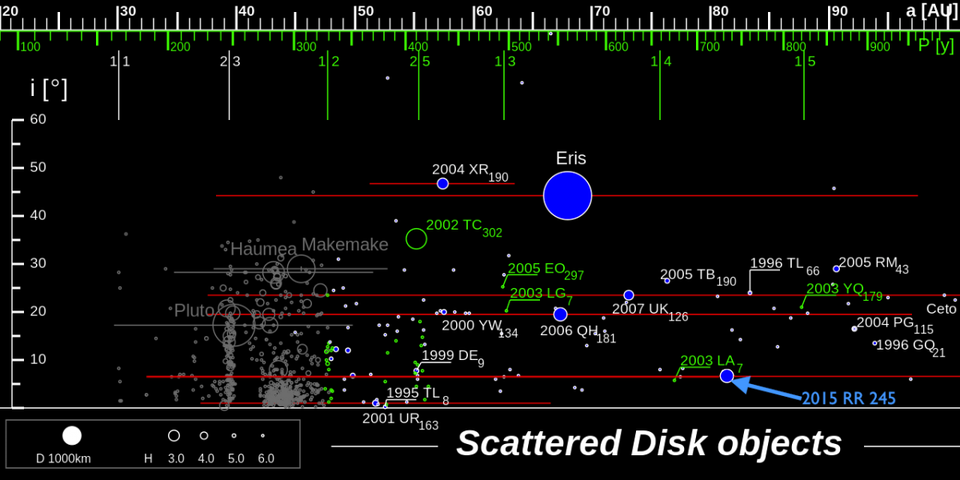
Distribution of scattered disk objects to which object 2015 RR245 is manually added. As long as we do not have a deeper and impartial observation of a large number of objects from the Kuiper belt, we will inevitably make biased conclusions about what is beyond the scope of our observations.
Of course, this study is not enough to refute the hypothesis of the Ninth Planet; it can still exist. As counterargument, Michael Brown suggested that a different observation strategy could be decisive, and the OSSOS was simply not a very suitable observation for the search for the Ninth Planet. However, as the proverb says, “there is no smoke without fire,” that is, there must be some reason for the observed effect.
If you suddenly discover that what was taken for smoke is only a figment of your imagination, this does not mean that there was no fire - but it definitely makes the hypothesis of the presence of fire less convincing. The OSSOS study does not exclude the presence of the Ninth Planet, but raises doubts about the idea that the Solar System needs it. Unless a deeper, improved observation reveals anything else, or we discover the Ninth Planet by luck, we should by default assume that it does not exist.
More articles on the popular science topic can be found on the Golovanov.net website. Read: what is the quantum atmosphere and what secrets does it reveal; what technologies will help us survive the end of the world ; how advertisers can manipulate the human desire for freedom; a series of articles on cosmology " Ask Ethan ".
I remind you that the project exists only thanks to the support of readers (bank cards, Yandex.Money, WebMoney, Bitcoins, and at least as). Thanks to everyone who has already provided support!
Source: https://habr.com/ru/post/433102/
All Articles